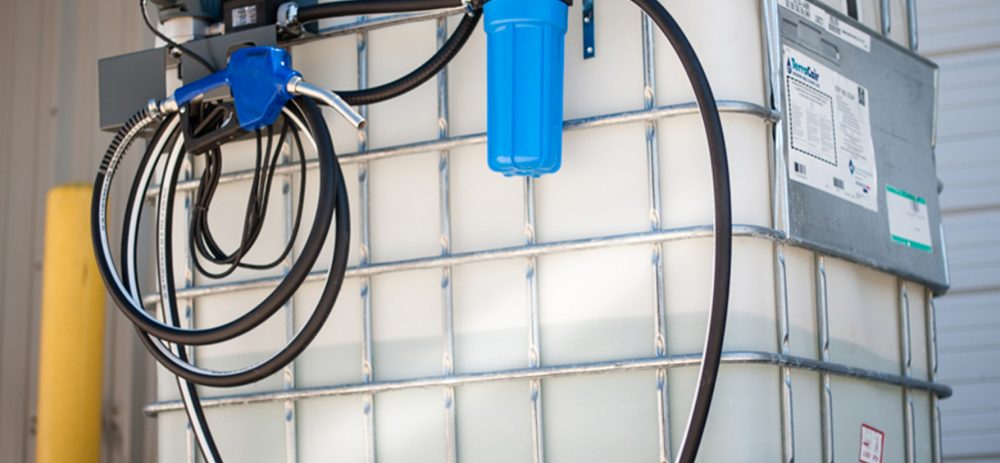Proper DEF Storage – How to Maintain Diesel Exhaust Fluid

Proper DEF Storage
To comply with the Environmental Protection Agency’s 2010 Diesel Emission Standards for medium and heay-duty vehicles, you’re most likely running Diesel Exhaust Fluid (DEF) in your fleet, and it’s important to ensure that you’re implementing proper DEF storage within your facility. DEF is considered a non-hazardous solution made from a mixture of 67.5% deionized water and 32.5% urea, which is sprayed into the exhaust system of diesel engines to effectively break down nitrogen oxide particulate matter, otherwise known as NOx and proper DEF storage is extremely important.
Required in 2010 and newer truck models, diesel pickups and some SUV’s, DEF is injected into a separate Selective Catalytic Reduction (SCR) system in the form of urea, used as a gaseous catalyst to break down harmful NOx emissions with nitrogen and water as the end byproducts. Besides a reduction in particulate matter, DEF has the potential to improve engine performance and fuel efficiency as an aftertreatment emissions control technology that works independent of the engine.
Proper DEF Storage
DEF is considered a non-hazardous solution of aqueous urea with a shelf life of up to two years. Since DEF is primarily de-ionized water, its shelf life is affected by fluctuating temperatures and exposure to direct sunlight and ambient air. Storage temperatures should not exceed 86°F (30°C) or go below 12°F (-11°C) and tank caps should be closed tightly to avoid evaporation, re-ionization and crystallization. Since DI water has had all metals removed from it, it is commonly known as “hungry water” because of its tendency to attract minerals and metals from ambient air.
The re-ionization of DEF from exposure to ambient air affects the product’s microparticulate solutionization by drying it out and making it impossible to re-solutionize to 100%. For this reason, maintaining a closed system is essential. DEF also has the potential to corrode certain metals such as carbon steel, zinc, copper and aluminum, therefore choosing the appropriate storage container is important to maintain the integrity of the product as well as to prevent leakage.
“It’s important to check the status of your city, county and state regulations on DEF storage to insure proper compliance and to avoid incurring fines.”
Primary and secondary containment for DEF storage tanks
Storage regulations for DEF change based on state, county and city specifications. In California the State Water Board determined in 2010 that diesel exhaust fluid containing a urea solution of up to 30% is considered a non-hazardous substance as defined in Section 25281 of the Health and Safety Code and does not require tank regulation under Health and Safety Code Chapter 6.7.
However, some California municipalities such as Santa Fe Springs and Fontana require the secondary containment of DEF in the form of double-walled tanks, containment basins or berms around tanks. Other Counties, such as Los Angeles do not adhere to secondary containment regulations. It’s important to check the status of your city, county and state regulations on DEF storage to insure proper compliance and to avoid incurring fines. As Diesel Exhaust Emission legislation and regulations continue to evolve, SCL recommends that our customers air on the side of caution and move in the direction of secondary containment for DEF tanks to avoid replacing or retrofitting them in the future.
Contact an SCL consultant today
In a wide range of industrial sectors, if there’s metal touching metal, oil is involved. At SCL, we’re here to protect and optimize the machines that keep our country moving and we pride ourselves on providing superior logistics and solutions, extensive product and industry knowledge, and total performance satisfaction for our customers. Call your SCL consultant today for more information on how to properly store your above or below-ground DEF tanks and whether your state, county or city requires secondary containment.
